Skokloster Castle is a magnificent baroque castle on Lake Mälaren. It is the largest private palace ever built in Sweden. Today it serves as a state museum with a parade hall, large collections of artefacts, a castle park and a castle café.
Table of contents
Skokloster Castle
Skokloster Castle is perhaps one of Sweden's most beautiful castles. Yet it was never really finished. If the master builder had not died during construction, it would have been yet more magnificent. We have made another visit to this magnificent palace.
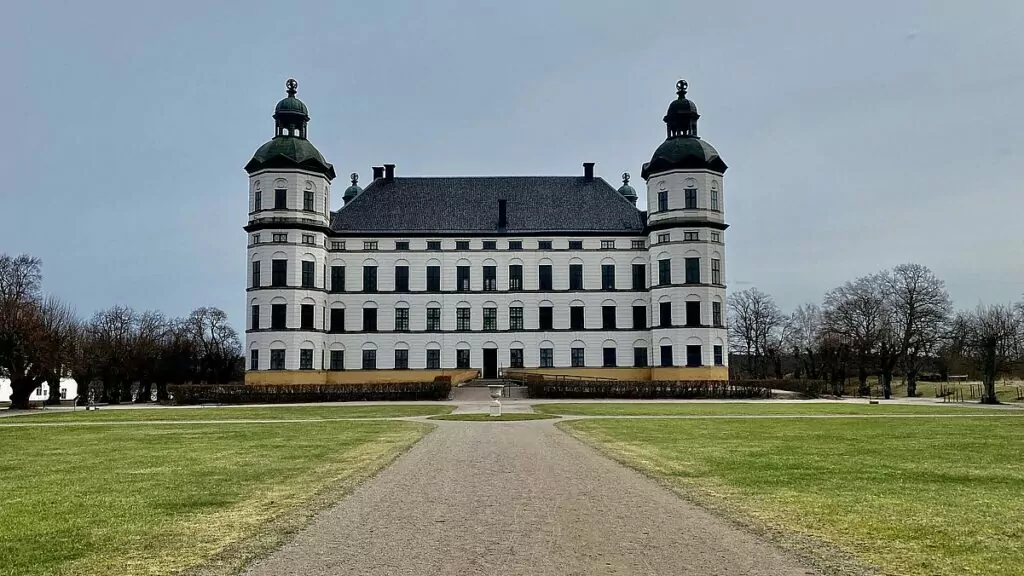
Skokloster Castle is located on Skohalvön by Lake Mälaren, in Håbo municipality, between Stockholm and Uppsala.
Previous visits to Skokloster Castle - tour and Skokloster games
We have both visited Skokloster before, but not together. Peter has been here on a guided tour once, and on another occasion he tested his drone in the area (photo and film clip below). I (Helena) have been here for the "Skoklosterspelen" once, with market, jesters and jousting. We both have very good memories of this beautiful castle.
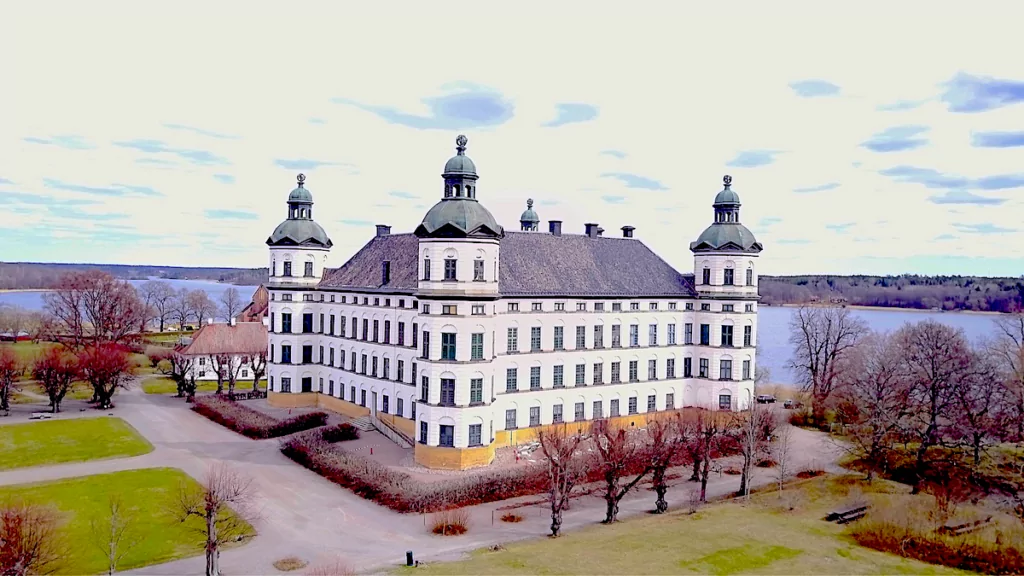
From monastery to private palace and state museum
There was a monastery on the site as early as the 13th century, and the so-called 'Stone House' dates from this time. At first there was a brick kiln here, which supplied materials for the church building, and later the priests lived here when they would preach. In the 16th century, the crown took over the monastery and when Herman Wrangel and his wife Margareta Grip moved here in 1611, they lived in the stone house.
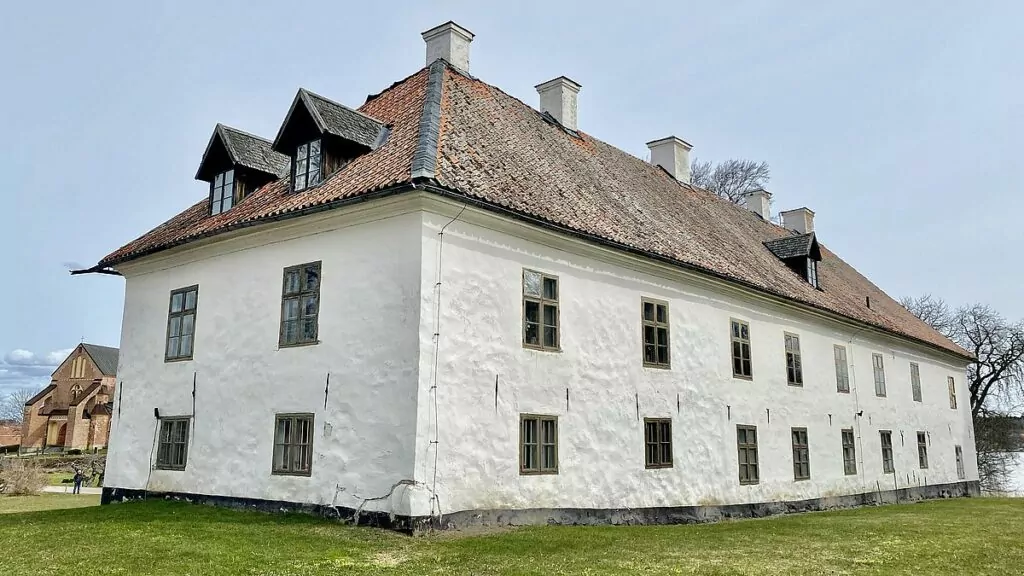
Skokloster Castle was built in 1654-1676 by Count and Field Marshal Carl Gustaf Wrangel. This was during the time of the Swedish Great Power, and no expense was spared in the construction of the baroque castle. The drawings were mainly made by the German architect Caspar Vogel, but were later reworked by various famous architects such as Jean de la Vallée, Mathias Spieler and Nicodemus Tessin the Elder.
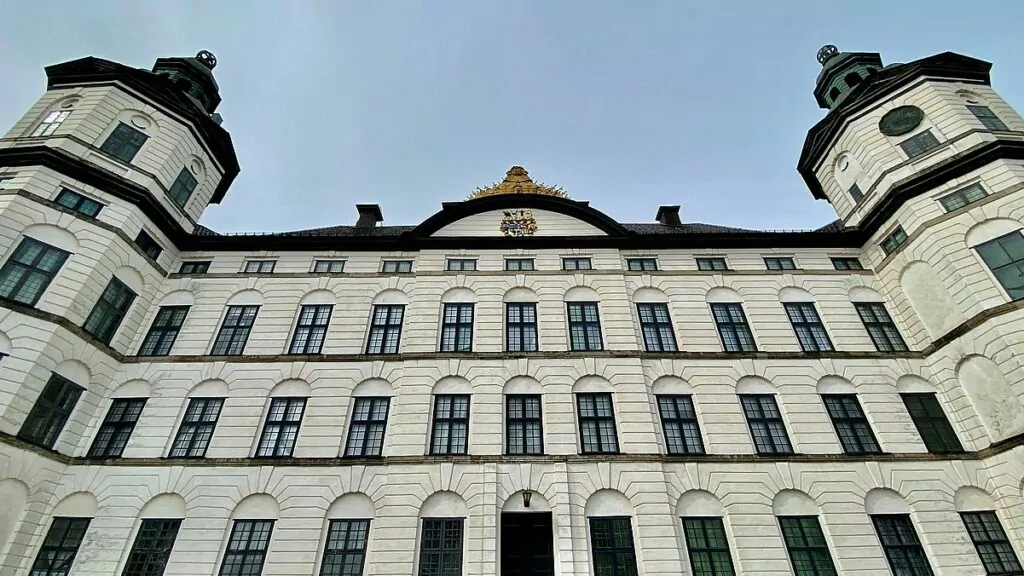
Carl Gustaf Wrangel suffered from poor health towards the end of his life, and when he died suddenly in 1676, construction of the castle came to a halt. The workers, fearful of not being paid, immediately put down their tools. Further planned facilities and magnificent gardens, which were to face the water, were thus never built.
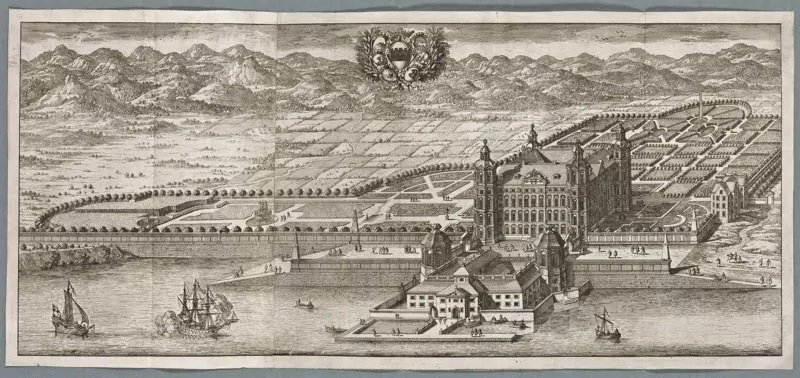
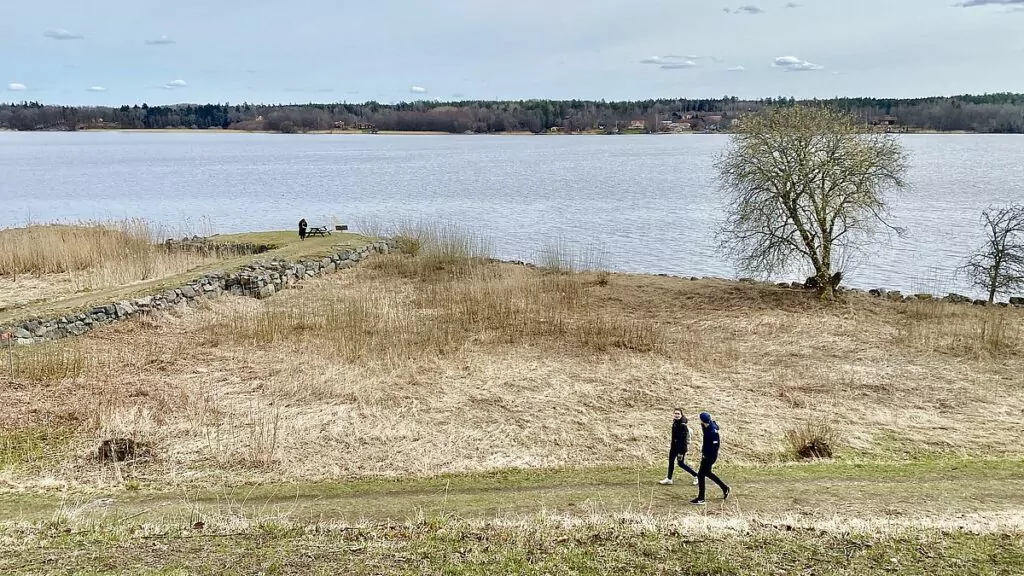
After Wrangel's death, the castle passed to the Brahe family, as Wrangel's daughter Margareta Juliana was married to Councillor and Admiral Count Nils Brahe the Younger. When he died in 1669, Margareta established a fideicommiss for her son, and the castle remained in the family until the line died out in 1930.
The castle was inherited by the von Essen family, and in 1967 it was purchased by the Swedish state, along with some 50,000 items of furniture. Today, the castle serves as a state museum.
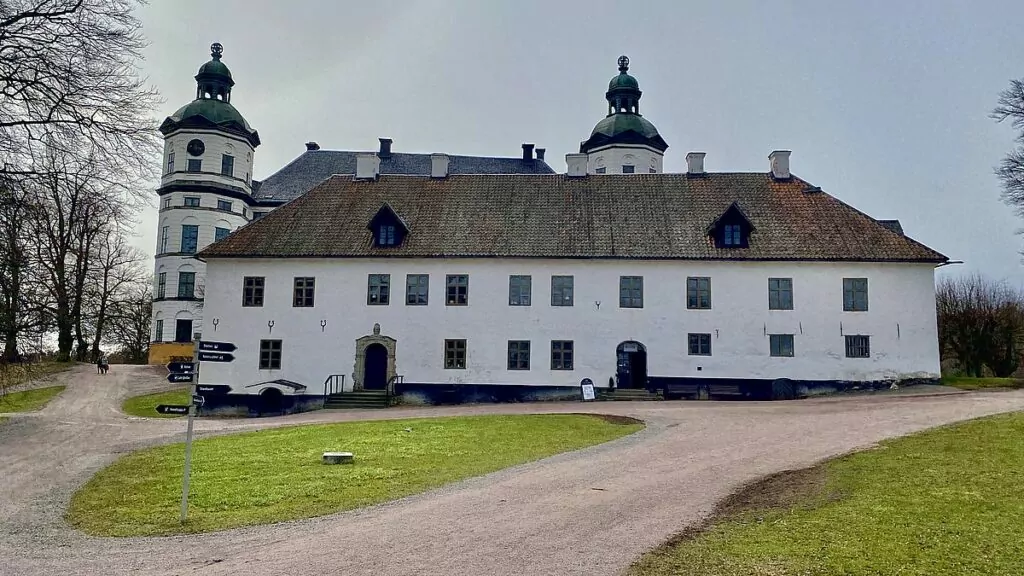
Visiting Skokloster Castle
Skokloster is a castle that welcomes guests in many ways. You can walk in the castle park, visit the castle shop or have coffee in the castle café. Both the small shop and the café were actually open when we were here.
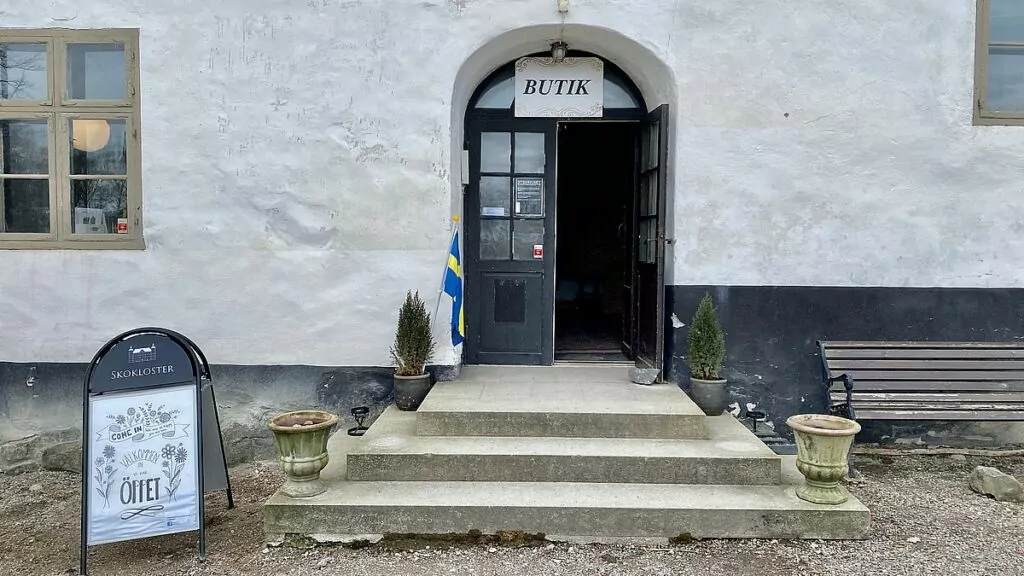
Usually the parade floor and collections are on display and you can join guided tours. The castle actually organised some guided tours during Easter for a limited number of people, but we missed these. On the castle's website, you can keep track of when tours and children's activities will start again. In the meantime, here's a press photo from the King's Hall in the parade floor!
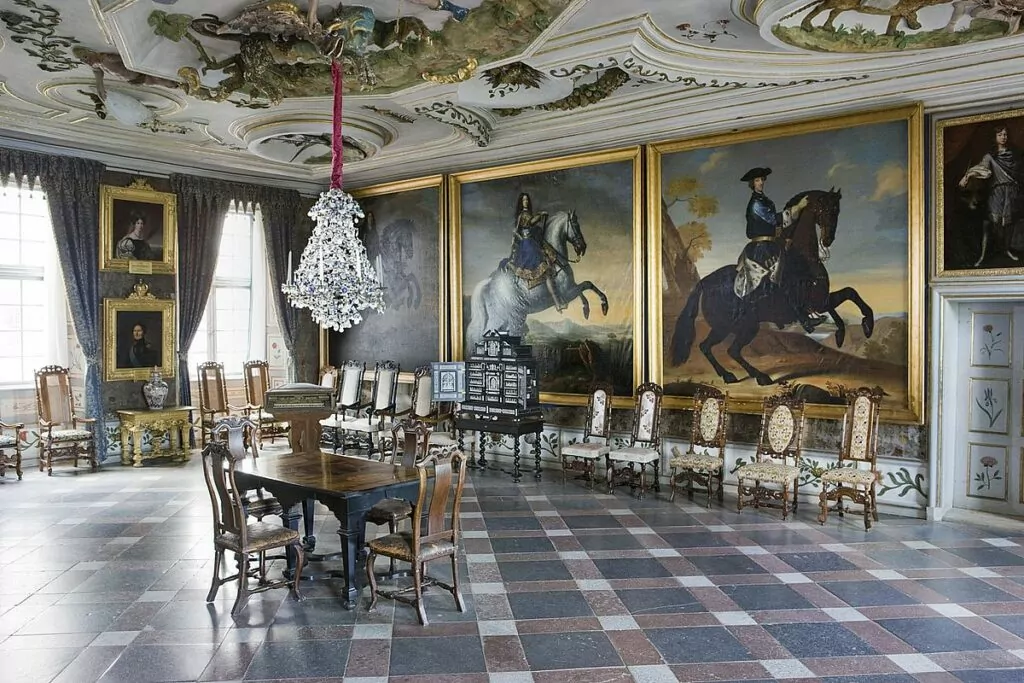
Castle Park
In the castle park, you can stroll along the avenues of lime trees that were planted in the 17th century. There are also plenty of apple trees and various flowers, perhaps brought here by the nuns of the Cistercian monastery.
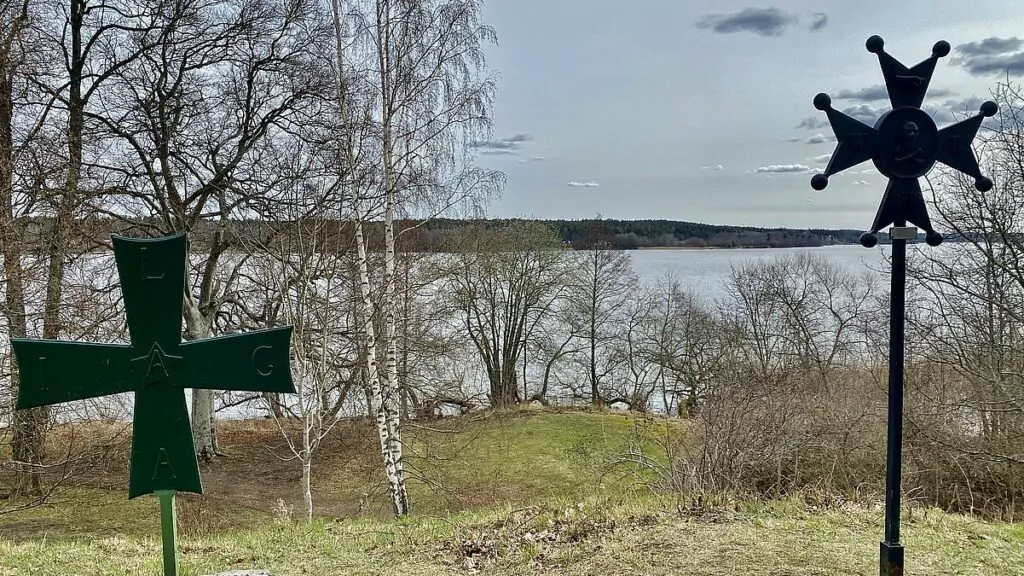
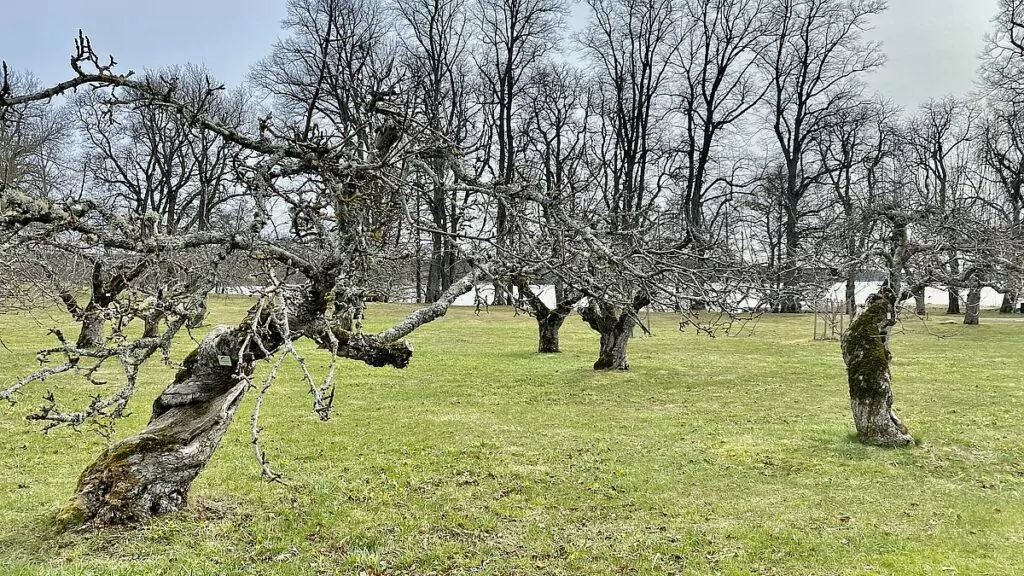
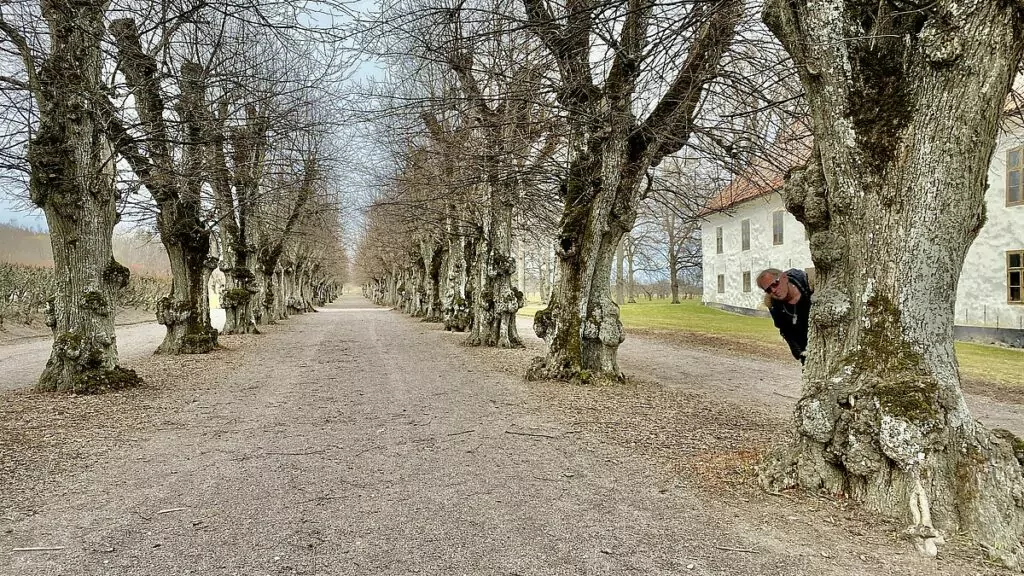
In the park there is also a monument to Magnus Brahe, where he is praised for chivalrous fidelity, sonly and brotherly affection, charity and self-sacrifice.
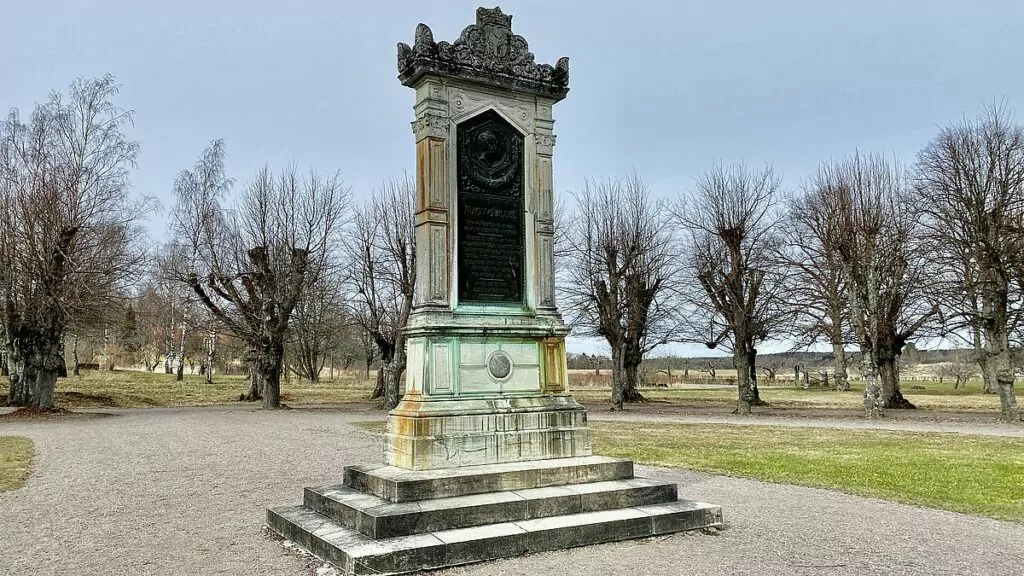
Skoklosters church
Skoklosters church was built in the 13th century. Then it was built as a monastery church and was part of the Cistercian monastery for nuns that existed on the Skohal peninsula until well into the 16th century. The Wrangel tomb was built during Herman Wrangel's time and was completed in the 1630s. The entire Wrangel family is buried here.
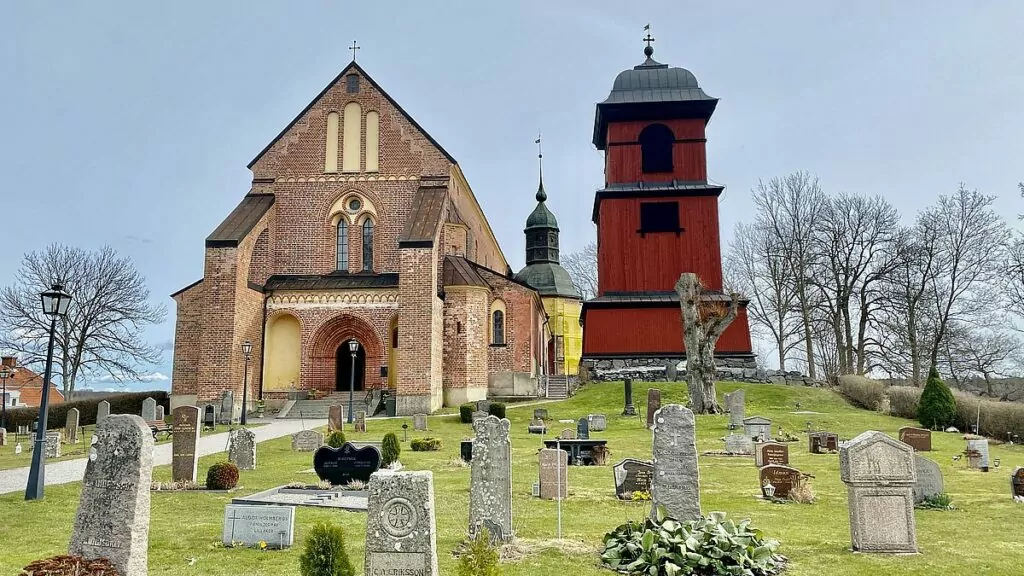
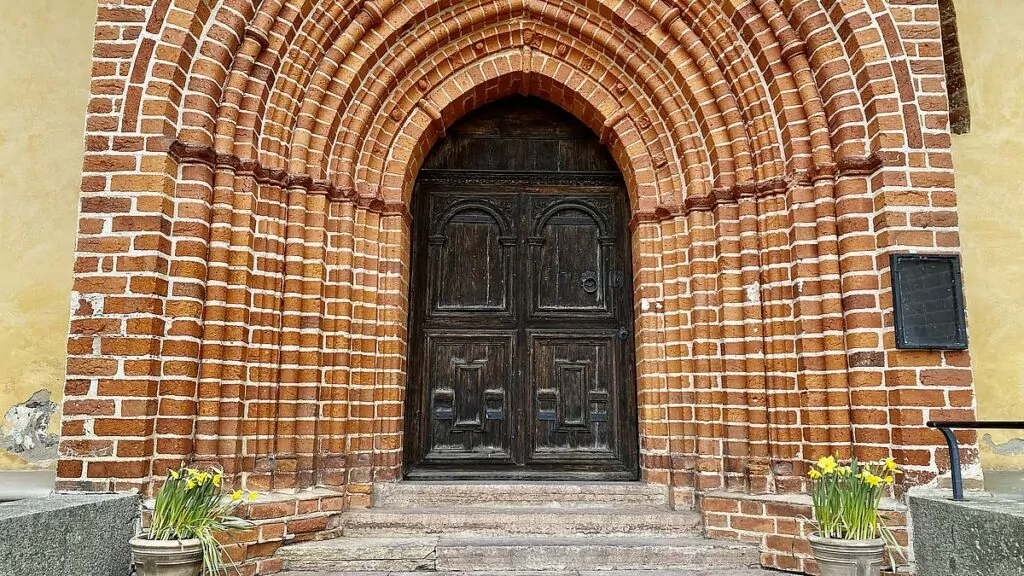
Flasta kyrkoruin
Already when we drove towards Skokloster Castle, Peter saw that there was a church ruin nearby, and since he has a penchant for ruins, a trip there after the castle visit was in order.
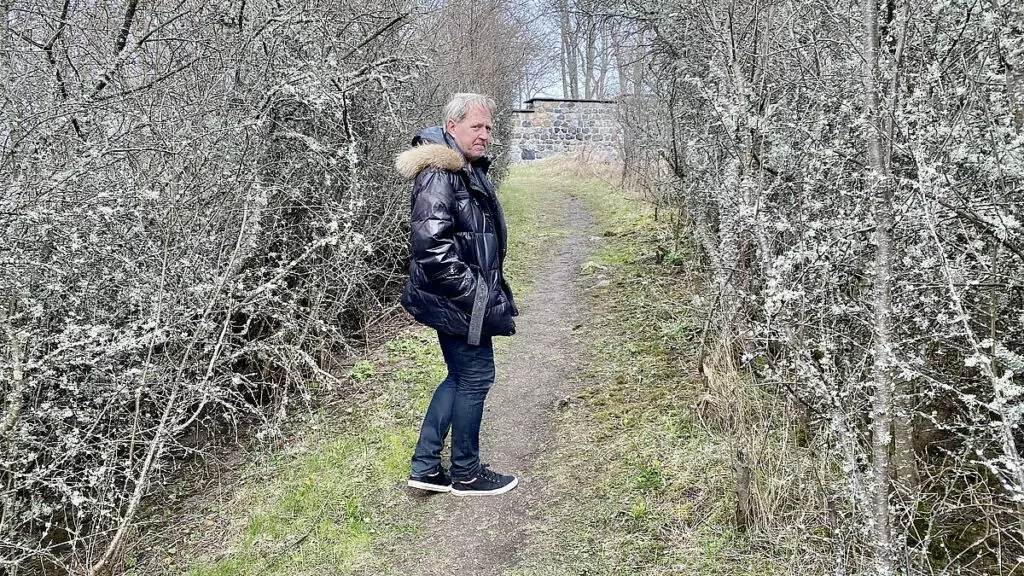
Flasta church ruin is the remains of the old church of Flasta, which was built in the Romanesque style in the 12th century. In the 1240s, the construction of the Skokloster church and monastery complex began, and when Flasta church was later destroyed by fire, it was never rebuilt.
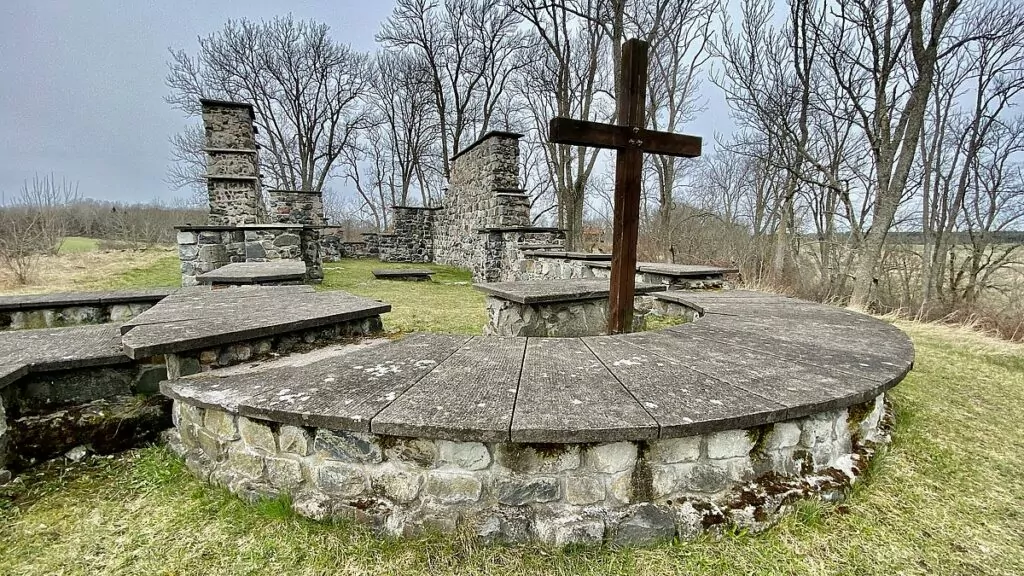
Skokloster camping
If you come to Skokloster Castle by camper van, you can stay overnight in the car park, for a fee of 100 SEK, which is paid to the charming little retro hut. Another option is to stay at Skokloster camping. We did neither one nor the other, as we continued the journey, but we can still show a picture from Skokloster camping. We were here with the motorhome in May 2011 - almost exactly ten years ago!
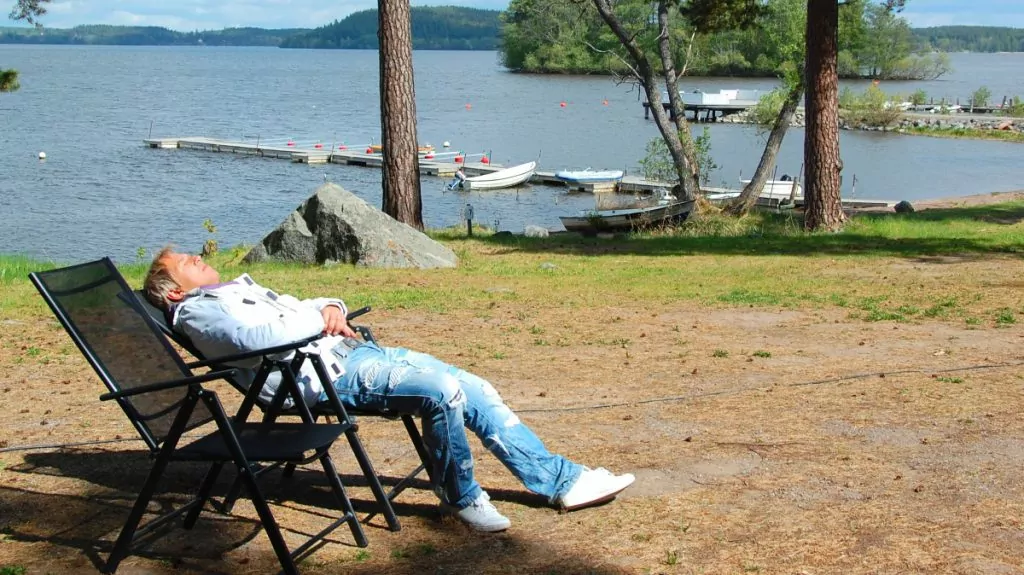
See more in the neighbourhood
From Skokloster it is not so far to Sigtuna with its charming alleys. Sigtuna municipality also has no less than four castles: Rosersberg Castle, Skånelaholm Castle, Steninge Castle and Wenngarn Castle. Below you will find even more tips for things to see and do in Uppland.
Butterfly House in Haga - tropical climate, butterflies and sharks
Have you visited the Butterfly House in Haga? For us it was a long time ago, but now...
Ängskärs sea campsite in Uppland - and three caravan sites
Ängskärs havscamping is beautifully situated on the Hållnäs peninsula in north-eastern Uppland. We camped here for one day and...
Kapellskär campsite in the Riddersholm nature reserve
Kapellskär's camping is beautifully located in the Riddersholm nature reserve, with the coast and the Åland Sea right outside. We...
Excursions in Stockholm in times of coronavirus - 15 tips
Tips on 15 excursions in Stockholm in times of corona! Because yes, what do you do when you...
Grönsöö castle in Uppland - and a cosy free camping site
Grönsöö Castle is a fine 17th century castle on the island of Grönsö in Lake Mälaren, Uppland. In the summers, the...
Museums in Stockholm - guide to the city's best museums
Why not visit some museums in Stockholm? Sweden's capital city is one of the world's most museum-rich...
Riddarholm Church in Stockholm - the burial place of kings
Riddarholm Church is Stockholm's only surviving medieval monastery church. This magnificent building, constructed at the end of the...
Lövstabruk - ironworks dating back to the 16th century
Lövstabruk in Uppland is one of the so-called vallon mills in Sweden, a historic ironworks....
Things to do in Norrtälje - 11 tips for the capital of Roslagen.
What can tourists do in Norrtälje? Norrtälje is an idyllic archipelago town with beautiful old...
Vikingabyn Storholmen - open-air museum in Roslagen.
Vikingabyn Storholmen is an open-air museum beautifully situated by Lake Erken in Roslagen. For a few...
Huvudsta farm in Solna - murder story and beautiful surroundings
Huvudsta farm in Solna is located a short walk from the marina where we live. We are...
Best restaurant at Arlanda? - we have tested La Girafe
Which is the best restaurant at Arlanda? There are of course several answers to this question...
Royal palaces in Sweden - 11 magnificent castles
Royal palaces in Sweden are the subject of today's article. Did you know that there are 11...
Drottningholm Palace in Stockholm - guide for your visit
Last weekend we visited Drottningholm Palace in Stockholm. It was a fantastic autumn weekend, and...
Lingnåre cultural reserve - historical trails in Uppland
Lingnåre Cultural Reserve is located on the Hållnäs peninsula in the municipality of Tierp. There are currently a total of 43 cultural reserves...
Skokloster camping - great waterfront on the Skohalvön peninsula
Skokloster camping (or Sånka camping as it seems to be called on the signs here) is located on Skohalvön...
What to do in Sundbyberg - 9 tips for cosy Sumpan.
What can you do in Sundbyberg? We have lived in Sumpan for many years, and...
Filmstaden Råsunda in Solna - 100 years of film history
Filmstaden Råsunda is currently operating as a cinema, although it is currently closed due to...
Gustavsberg in Värmdö - in the footsteps of the porcelain factory
Gustavsberg is a nice little town in the municipality of Värmdö in Stockholm, which is mainly...
Berth in Sikhjälma harbour - scenic area at Hållnäs
This motorhome weekend started with us going to a parking space in Sikhjälma harbour,...
What to do in Stockholm - 30 sights and experiences
What to see and do in Stockholm? Stockholm is the capital of Sweden and has lots of...
Marabouparken in Sundbyberg - art gallery and park hangout
Marabouparken in Sundbyberg is a park with an art centre and a large collection of sculptures. Despite...
Siggesta Gård in Värmdö - now with parking spaces
Siggesta Farm in Värmdö, outside Stockholm, is a rural hotel with conference facilities, outdoor activities, animals,...
30 attractions in Old Town - tourist in Stockholm
Sights in the Old Town! The old parts of Stockholm are not only charming and beautiful,...
What to do in Solna - 15 activities and experiences
What can you do in Solna? We have lived in Solna for eight years, and before...
Kvarngården in Knivsta - homestead with nice parking space
Kvarngården in Knivsta is a local history centre and caravan park run by Knivsta Hembygdsgille. Here...
The Swedish Upplands Road - FREEDOMtravel Themed Roads
Writer: Peter Bergström The Swedish Upplandsvägen is a themed road that takes you from Stockholm through...
Salsta Castle in Uppland - castle café, guided tours and ghosts
Salsta Castle is a beautiful baroque castle from the 17th century. We were fascinated by the beautiful building when...
Rullsands camping and sea baths
Rullsands camping is a nice campsite outside Gävle. The location of the campsite is very nice and...
Free camping at Lake Erken and Norr Malma nature reserve
During the last night of the midsummer weekend, there was free camping at Lake Erken in Roslagen, at Svanberga bathing area....
Paul Taylor Lanthandel - celebrity restaurant in Sundbyberg, Sweden
Paul Taylor Lanthandel in Sundbyberg is a climate-smart, modern and, above all, sustainable restaurant....
Bogesund Castle in Vaxholm - and the Great Castle Tour.
Bogesund Castle in Vaxholm is a beautiful 17th-century castle located in the Bogesund countryside in Stockholm...
Gräsö in Roslagen - a scenic gem
Gräsö is a scenic island, located just outside Öregrund in Roslagen. The island is surrounded by...
Sigtuna - Visiting the oldest town in Sweden
Join us in Sigtuna, Sweden's oldest town! Yesterday we woke up to blue skies and decided to...
Pampas marina in Solna - all you need to know
Pampas marina in Solna is a marina, where you will also find houseboats and a restaurant....
From Sundbyberg to Sigtuna - a visit to the Sigtuna Foundation
Guest writer: Christina Gripenberg More specifically, to the Sigtuna Foundation. It's a journey of 1.5 hours, first...
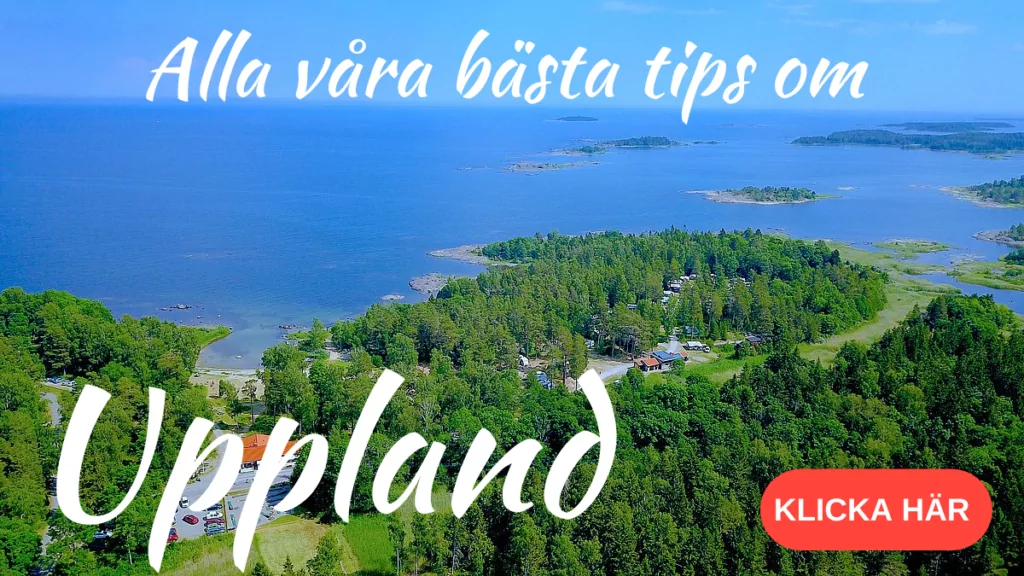
Have you visited Skokloster Castle?
Have you visited Skokloster Castle, or perhaps stayed at the campsite? Please tell us about your experiences!
Facts about Skokloster Castle
- Country: Sweden
- Landscape: Uppland
- County: Uppsala
- Municipality: Håbo municipality
- Architects: Caspar Vogel, Jean de la Vallée, Mathias Spieler and Nicodemus Tessin the Elder
- Developer: Carl Gustaf Wrangel
- Style: Baroque
- Completion: 1676
- Owners: Swedish government
- Read more: You can find more information at the castle's website
Services and practical information
- Food service: The Castle Café serves lunch, sandwiches and pastries. There is also a café and restaurant in Macken. In the summer, Café Sjövillan, the church café, is also open.
- Shop: The castle shop sells souvenirs. There is a grocery store in the Macken.
- For families with children: You can leave your pram on the ground floor. Strollers are not allowed on the museum floors.
Tours and activities
- Audio guide: Can be rented when the penthouse is open.
- Views: Guided tours are given at various times. See the castle's website for current information.
- Larger groups: Groups can book tours, both daytime and evening, as well as special tours and packages.
- Activities for children: Castle studio, castle safari and other activities for children and families.
- Rental of premises: Premises can be hired for events, weddings and more.
Accessibility
- Accessibility in the castle: Only the ground floor of the castle is accessible by wheelchair. There is a ramp at the main entrance.
- Companion/assistant: Companions and assistants have free entry.
- Assistance dog: Guide dogs are welcome. Otherwise, dogs are not allowed in the castle.
- Toilets: There is an accessible toilet in the castle, but it has no alarm.
- Parking: There are two car parks at the castle that can be used by people with reduced mobility who have a parking permit.
Finding Skokloster Castle
- Address: Skoklostervägen 98-100, Skokloster
- GPS coordinates: Latitude 59° 42.337′, Longitude 17° 37.341′.
- Stopping with a motorhome: You can park overnight for a fee of SEK 100. Payment is made at Macken.
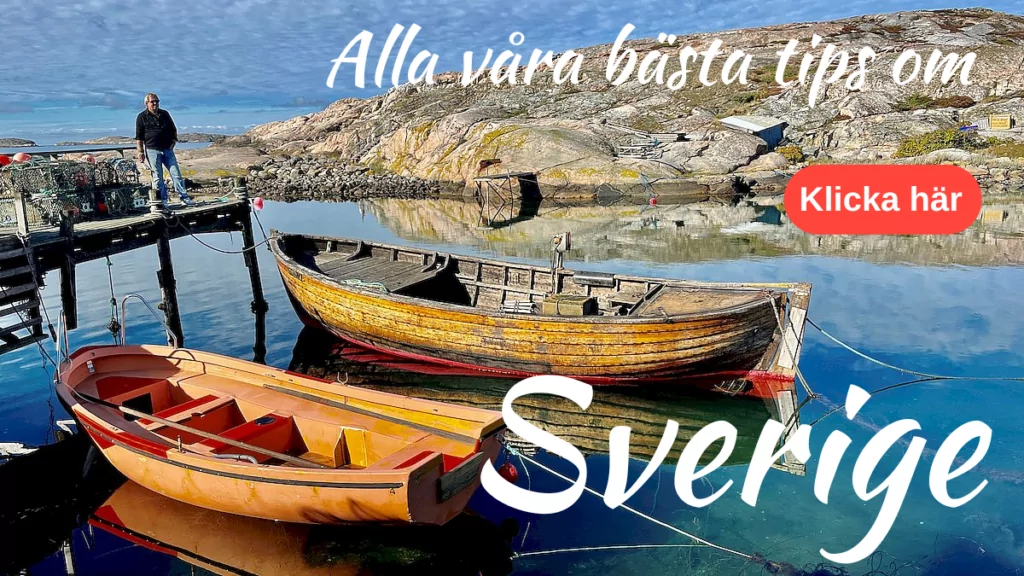


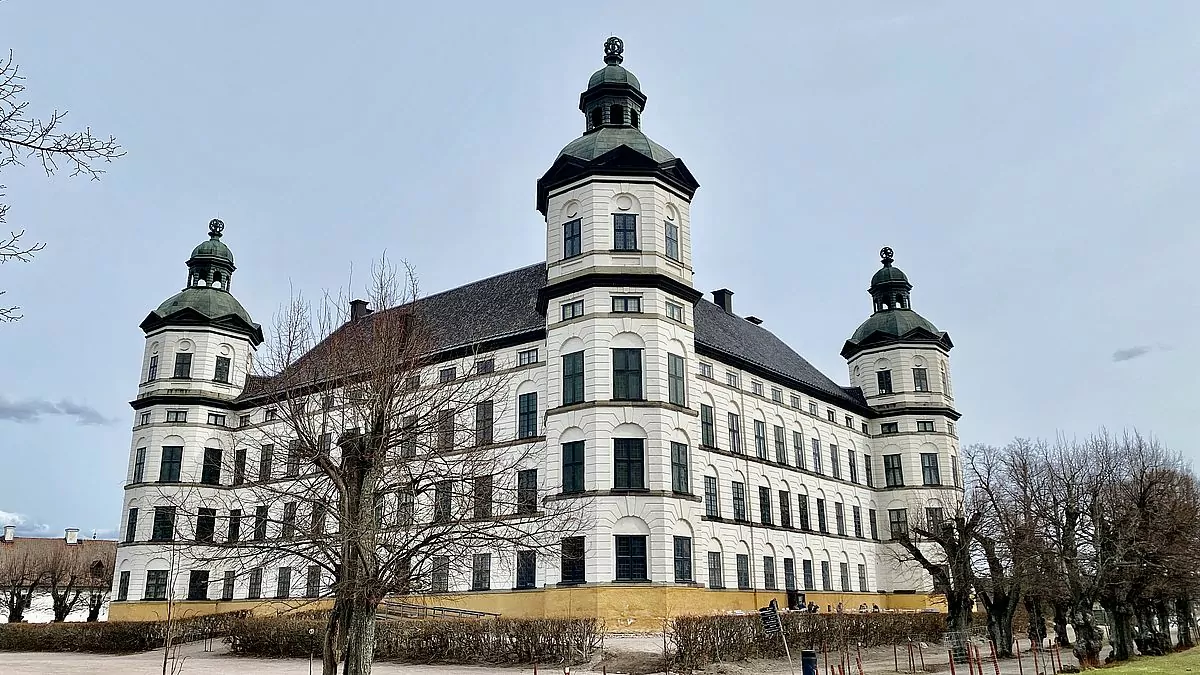






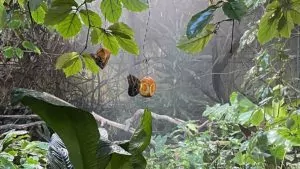
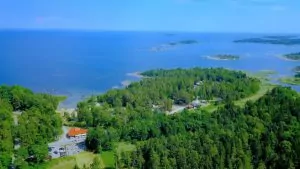
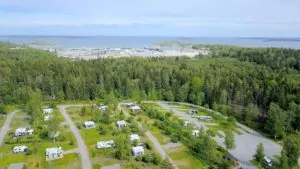
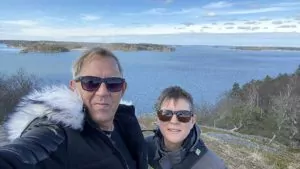
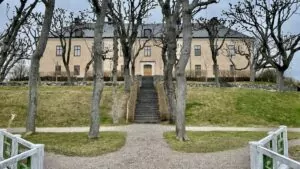
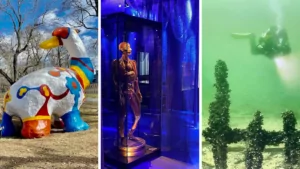
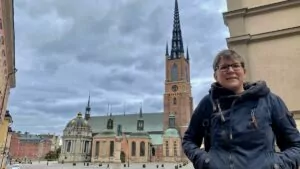
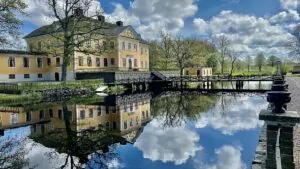
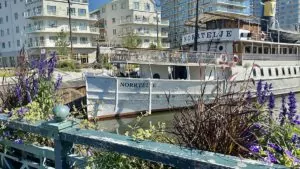
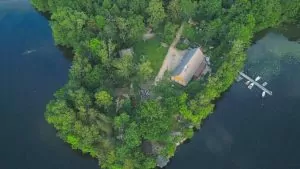
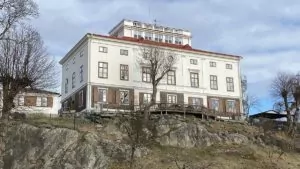
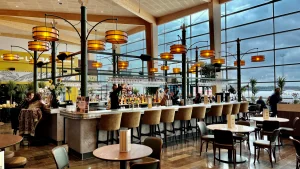
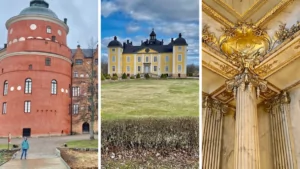
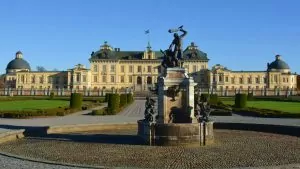
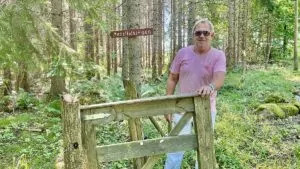
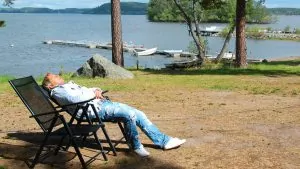
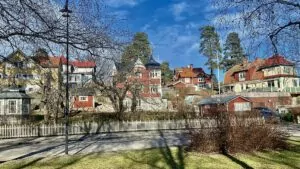
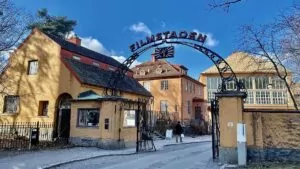
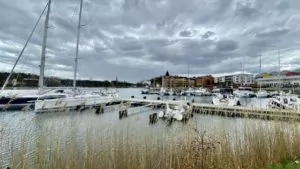
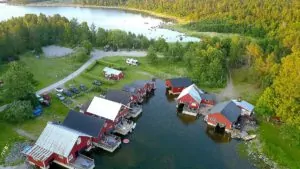
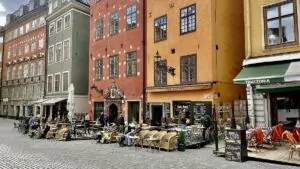
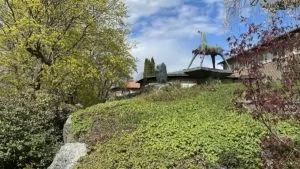
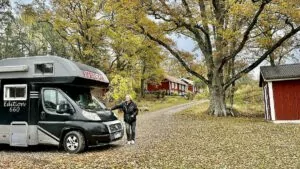
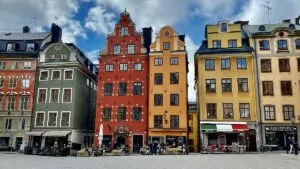
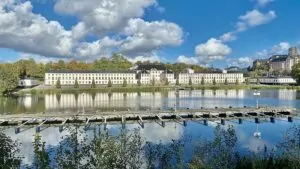
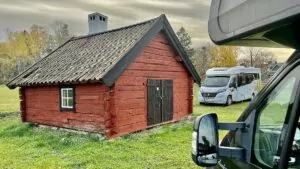
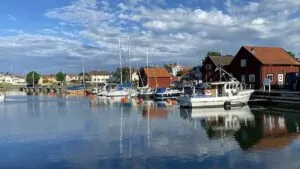
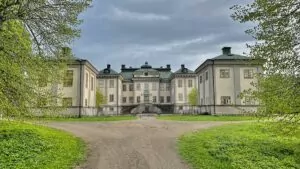
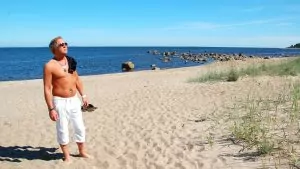
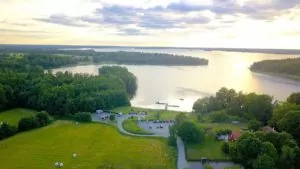
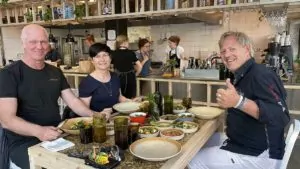
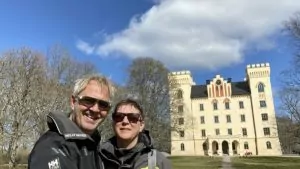
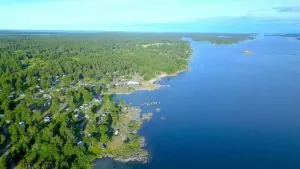
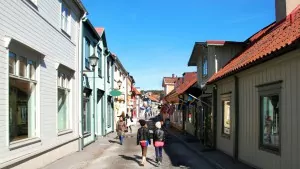
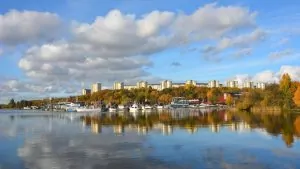
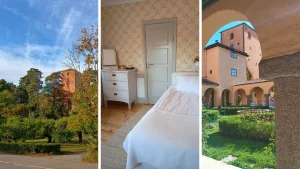
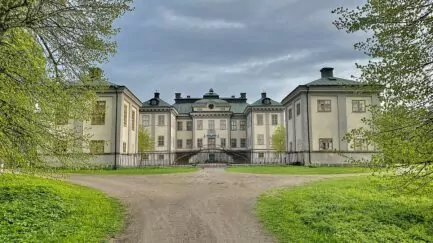
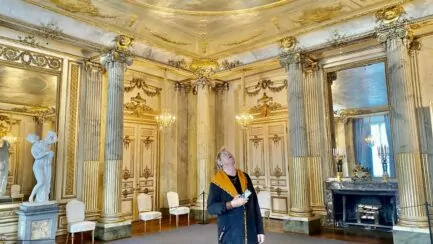
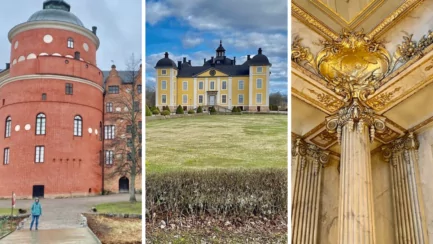



Ama de casa says:
Skokloster is really a magnificent castle! I have been there on a tour and many years ago we visited a medieval market there. I have a memory from there that I use quite often. It is a potato stick where the top is a small black wooden cat and it is equipped with a magnet. So it hangs on the fridge so I see it many times every day 😉.
Have a nice little Saturday!
14 April 2021 - 9:20
Helena says:
I have also visited that medieval market! Didn't buy a potato stick, but I think I bought a mungy one 😉 Have a nice time!!!
14 April 2021 - 20:03
discho-gold says:
oh what buildings so beautiful
14 April 2021 - 14:30
Monica says:
So interesting castle and fascinating history. And very beautiful is both castle and nature. I know that the nuns were asked by Gustav to stay because everything was going out of control when the king took over and here the nuns had a high class school education not only for snobs but also for the children of the workers. Gustav's gang could not cope with that, he himself was expelled from the Cathedral School in Uppsala as a 13-year-old bad boy when he drove knives into the books during outbursts of aggression, interesting in its own way that there was such a thing at that time, haha. I myself took the student at Katedral and that school was considered very honourable with the best, others went to Lundellska which was called Skrapan for some reason ... Fun that the castle café is open and the shop, also has that potato stick so now I have to look for it, had to hide when I found one in the UK. Thanks for the nice post with all the nice photos, will probably take a trip and to Sigtuna at the same time. By the way, have they rebuilt the beautiful bell tower again? I almost got a shock when it burned and have it in photos from the beautiful street where you saw it in the front. Have a good time you in the week out.
14 April 2021 - 16:58
Helena says:
But wow. what interesting stories you could offer! Thank you!!! And haha, what fun that you also have that potato stick, it seems popular 😉 Sigtuna is really a nice town and yes, the bell tower is back!!!
14 April 2021 - 20:05
BP says:
Absolutely the most beautiful and magnificent castle you have shown so far. And it is not only the castle that is impressive, the church is incredibly delicious as well.
14 April 2021 - 20:27
bmlarstravellingblog says:
Skokloster is incredibly impressive! Lars has been there and taken a guided tour that was really interesting, so if we go there, it will probably be one of the castles that can be visited.
14 April 2021 - 22:25
Lena+in+Wales+and+Spain says:
I have visited Skokloster, but it was so long ago that it is time-barred and I would like to go there again when they open up.
Such interesting history and good that the state, under normal circumstances, has the castle open to the public.
Thanks again for the interesting post!
16 April 2021 - 12:17
Lena - good for the soul says:
Yep, I've been there. Both on a guided tour and tower games. Really nice area and castle!
Hug Lena
22 April 2021 - 22:01
Annie - Big Little Adventures says:
Skokloster is really nice! I remember when I was on a guided tour there when I was a kid, so cool 🙂 Last time I was there I didn't go in, it was last summer so it was closed, but we walked a nice hiking trail from there 😀.
23 April 2021 - 11:14